15 July, 2025 | Carp | Angler Blogs | Tips | Articles
0 CommentsAndy Bradnock: The Long and Short of Carp Fishing Rig Mechanics
Andy is back with another insightful article – this time discussing all things carp fishing rig mechanics!
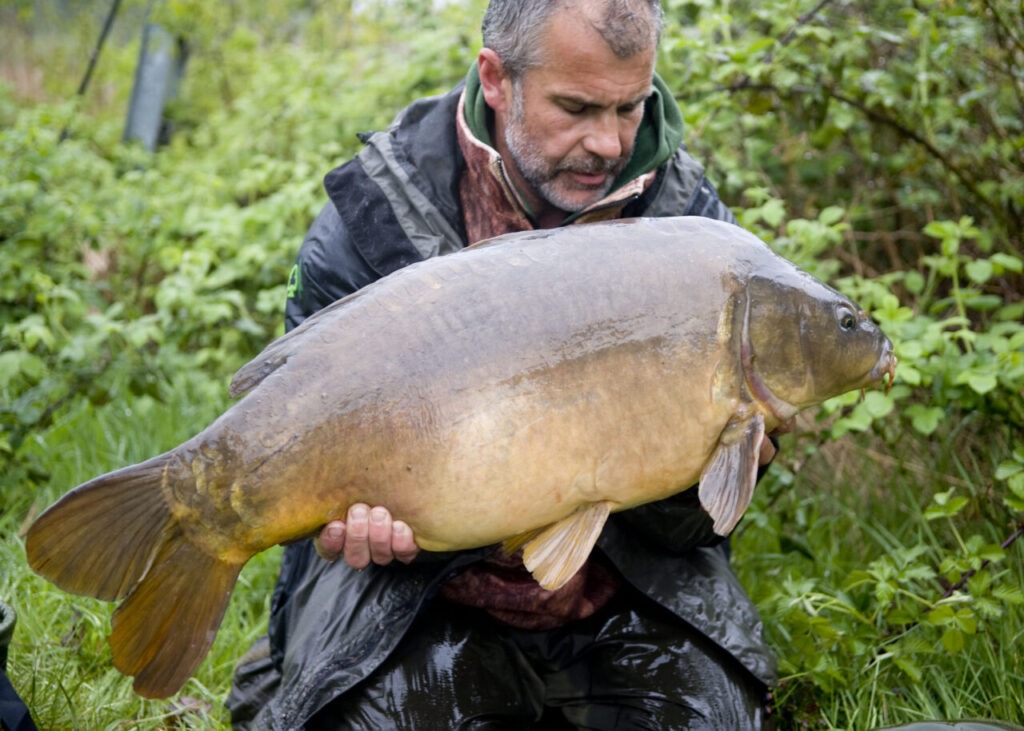
Rig Mechanics…
I am in the middle of a run of insomnia, so as it is 02.30am and there is little chance of a bite to write about, I thought I would try something completely different, which is way way out of my comfort zone. As sleep seems to be unattainable, I thought I would have a go at penning this. Rigs are usually so boring that I may be lucky and be asleep again before I have finished the first page…
The ’wrong uns’ (Andy Mackie and Adam Whittington) will be laughing their heads off, maybe even having a full on ROFL when they hear I am attempting this – for the last 20 years I have been ridiculed for how rubbish my rigs are by the pair of them.
I also admit that I am not qualified in any way, shape or form to write this. Why bother then? Well, all of the articles on this website have comment sections but, not a single one seems to have been filled out by a human as far as I have been able to ascertain. The bots that hijack the site promote everything from erectile dysfunction creams to window cleaning services.
They link to a few quite mucky sites as well and, just for scientific purposes you understand, I have investigated their content.
Then suddenly a comment by a guy called Richard popped up and to all intents and purposes he appears to be a normal human. He is obviously delusional as he thinks I can contribute anything to a rig discussion but, I am so chuffed that anyone has read anything I have written, I thought I would give it a go.
There is no way I can do a – use this, use that type article and, holding a rig up in front of my face is never going to happen, but maybe a general broad-based approach will be different enough and thought provoking enough to hold some interest.
As carp anglers we seem to be fed a diet of one rig or another, one angler keeping it simple, another having more components than the space shuttle. These rigs are faithfully copied and chucked into every wobbly bit of water in our green and pleasant land.
At no point are we asked to think for ourselves or, decide why we are doing something and if it relates to our fishing situation.
What I hope the next bit of drivel to leave my keyboard will do is maybe, make someone think a little more laterally about a problem and maybe even catch an extra fish or two.
To begin with, a look at some of the plethora of underwater videos I think is important.
Although conclusions drawn from these videos, must always take into account the way they are produced. I am not even remotely interested in which rigs have worked, especially when it has failed on the last 10 pick-ups, what I look at is why the rigs have failed.
How is that fish avoiding the hook-bait or ejecting it – if it picks it up. Ejection and avoidance in my mind, are two completely separate issues and, you must take into account that all these videos are shot during the brightest part of the day on shallow clear ground, with a poor baiting scenario aimed to keep water colouration to a minimum.
Having said that, if you can find a rig that works in these circumstances then surely, they will work anywhere.
However, the only way these videos work is in this type of environment so we have to play with the hand we are dealt. There are very few circumstances in general angling where we can watch our baits being taken. Very occasionally margin spots on clear lakes can be observed but perched in trees waiting for a bite is a very short-term affair usually curtailed by cramp and pain.
I will start with how I see rig avoidance. On the videos this usually seems to be attributed to a visual avoidance, I really don’t think this is the whole picture at all. I do or did anyway, before bird-life became impossible to deal with, an awful lot of floater fishing. I have had many thousands of hook-baits rejected by carp over the years and very few ‘avoid’ the hook-bait from a distance.
Usually, the bait is mouthed and rejected in a big swirl. Now everything is visible on the surface so why would a fish that can see a bait is a scary hook-bait go anywhere near it; they would avoid the bait from 5ft away. Therefore, I am sure that it’s the feel of the hook and line as it touches their lips that causes the rejection rather than avoidance.
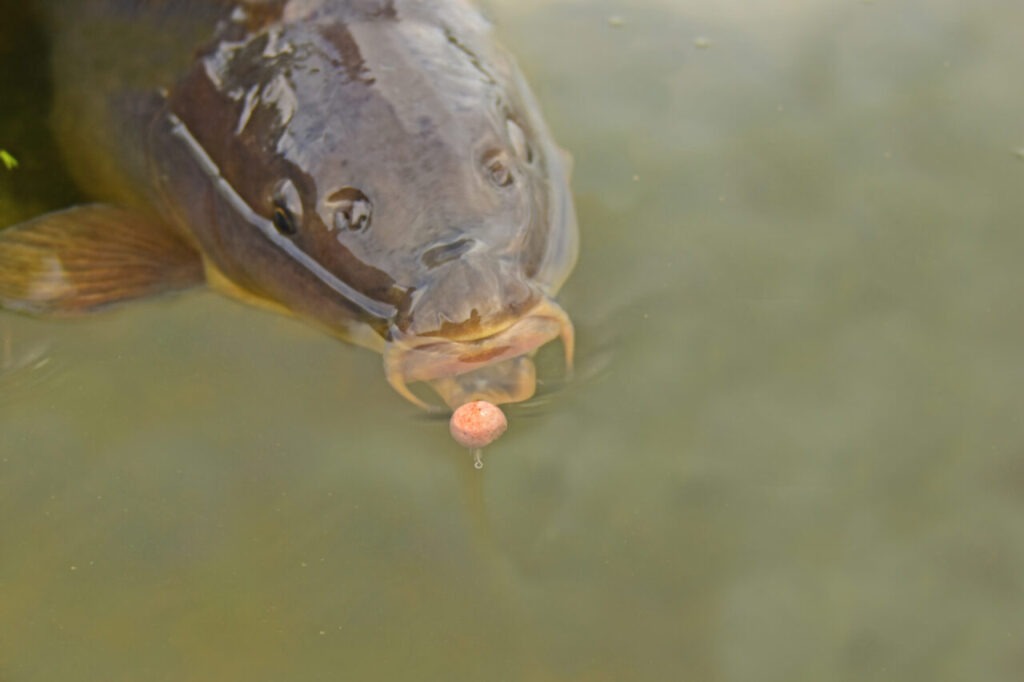
Avoidance as I see it, is where the fish are happily feeding on the spot but ignoring the hook-bait or being spooked by it.
Carp anglers seem to be obsessed by bright laree pop-ups and if not using these have ‘wafters’ on the hair rather than a straight bottom bait.
The reason that they use wafters is to negate the weight of the rig by making the bait lighter so that the same amount of suck is required to get the bait into the mouth. This from a physics point of view is utter rubbish.
What is happening is the hook-bait is tethered by the rig and has a degree of mobility limited by the length of the hair. This mobility means the bait is moving around, in a fairly un-natural manner, in the currents created by a pack of feeding carp. Think about how camouflage works, while sat still the animal is virtually invisible but, any sort of movement suddenly makes it very visible.
Even our peripheral vision picks up these movements, with the positioning of a carp’s eyes this movement is very noticeable. When anglers first started to use wafters, I think this movement acted like twitching a worm in-front of a perch a ‘what was that’ type movement that makes the carp hone in on the bait. Maybe now though that movement, especially when added to a bright coloured bait is a scary thing to the paranoid carp that reside in our heavily fished lakes.
As for pop-ups – especially bright ones, plastic bait toppers and red kickers etc, if a carp is so smart that we have to hide away all our rig components and match our tubing and lead clips to the lake bed, how can a bright thing not be scary? It’s just that in our minds it is attracting them to the bait rather than scaring them away.
In that scenario why not use a red tubing to point to the hook-bait?
The argument I guess is that straight lines are un-natural and the fish can see line/tubing/leaders etc while being ‘played’ so they will be scary.
However, every single time a pop-up is picked up that fish gets caught. Therefore, they should be super scary whereas a bottom bait is the same as the thousands that have been picked up and eaten over years and years – a Floro pop-up is a long way from natural.
Also look at how the topped baits and snowmen move – with any sort of water movement around them they ‘wobble’ like weebols (old toy, look it up from the 1980’s) which looks really un-natural.
The other concept that is often discussed and sort of falls into the avoidance category is rig re-setting.
What does that really mean, I assume that it means that if a rig is picked up and ejected then it settles back down away from the lead and leader and is ready to not hook the next fish to pick it up.
Surely it is better to concentrate on rig mechanics that actually work rather than re-setting to a configuration that has just failed. Also, these rigs with stiff booms only work how the diagram suggests when the fish approaches from the right angle. However, when considering these rigs, remember the fish can come from any angle and will the performance of the rig be affected by this?
Also, does it matter if the lead and bait or leader and bait are close together? If a fish recognises a leader or a lead as dangerous being another 5 inches away from it, will that make a difference? If they were that smart, we would never catch another carp and pop-ups would have stopped working in the 1990’s.
Obviously we have to assume that the rig will be ejected sometimes, so you don’t want it landing in a tangled heap but does everything have to land in a straight line???
So, once you have decided on your hook-bait and its degree of waftiness then you have to decide on how to attach it to a rig.
Firstly, lead arrangement – fixed or running. Does a running lead mean what we think it means? To have a truly running rig at anything over probably 30m into the lake would require a lead of best part of 10oz.
For the lead to sit still and line to run through a ring only happens if the line is really slack, there is no sediment, weed or debris to restrict the line movement – and only if the fish runs directly away from the lead at the same level as the lead.
As the fish comes up in the water it’s trying to pick the lead off the deck. In that case, the running lead system is acting as a less efficient fixed lead.
There is a possible advantage to this though – on the underwater videos I have watched, the main reason the fish gets away with not ending up having its photo taken is in the initial few seconds, as it shakes its head.
They all do exactly the same, the rig pricks, they shake their heads and out comes the rig.
Watching this in slow-motion (I am a dork what can I say) the issue to me looks like – as the lead is swung by the head shake, it hits the limit of the hook-link and the force pops the hook out.
There is therefore an argument for using a running lead to try to prevent this jolt effect. I think from a physics standpoint again, this doesn’t work how we think it does, I think it’s because the distance from the lead to hook increases so makes the swing angle less, thus having less impact on the hook point.
The question is, does the lack of efficiency in a running system at hooking but, less likely to bounce the hook out make it so that more or less fish end up on the bank.
I think it is the most important period of the whole process, as it seems to me that the majority of carp that ‘get away with it’ do so at this point.
To counteract this some sort of elasticity in the rig maybe the way forward – try unhooking yourself from a bungee cord with a weight on the end, it is much more difficult than doing so with a straight bit of string. Make sure you aren’t a moron doing this, I don’t want to be sued because you have hit yourself in the face.
At least wear safety specs you Muppets. How to incorporate the elasticity into the rigs can be varied and it’s up to you on how you do it. Adam has written about a rig he calls the Nora which he came up with while we were fishing a crystal-clear Southern pit with some really cantankerous paranoid carp present.
- The Nora Rig in all its ‘ugly’ beauty
- Where Adam developed the Nora. 39lb of gnarly old Italian sadly no longer with us
The length of your hook-link is probably the next thing to consider – how long is perfect? I don’t think there is a right or wrong answer to this.
Again, remember the effective length of a hook-link is dependent on what angle the fish approaches from – a stiff straight hook-link a foot long could act as a 1-inch hook-link from one angle and, a 2ft hook-link from another.
Also tangling is an issue – fishing at 100m is obviously different to lowering a bait in the edge, the question is ‘is it better to have a rig that works better but potentially tangles or a tangle free rig that only converts a few takes into photos in your album’.
The problem is we leave rigs in place for many hours/days/weeks, which is completely different to every other form of angling.
When I am barbel fishing I move a bait probably every 15-20 mins at least.
A tangled rig is therefore, only a waste of a small portion of my session. I sometimes leave carp rigs in-place for days, so a tangle results in a significant waste of time.
All manner of hook-links from mono to coated braids and supple braids will catch fish, my advice is to find something that is reliable and you are confident in, then don’t change it.
I have been using the Nash trigger link for years now I have had a spool that snapped as soon as you looked at it but other than that it has been really reliable. I like that it adds a little more elasticity in the rig but the main benefit as I see it, is how soft to touch it is which hopefully, doesn’t spook the carp as it passes over their lips.
Deciding how well something is working is again difficult due to the nature of carp fishing – on some waters it takes weeks/month/years to work out if something is working one bumper session or a few blanks can mean nothing in the long term. A trip to a really easy water may speed up the process but what works there may be utterly pointless on your main water.
Hook choice is a very personal thing, I want them super sharp and am in the very lucky position that I was shown how to sharpen a hook properly by Jason Hayward, it’s a real skill that I am yet to master.
There are super-sharpened hooks out there but be careful as I have had terrible years due to the nature of the lake damaging hook-points – they have to be reliable, after all the hard work getting the bite, the last thing you want is to be let down by a poor hook.
Think about what you are asking a hook to do, how wide do you want the gape – is bigger better? The trend to use ever larger hooks is growing but is this reducing your pick-up rate. In the olden times we used smaller hooks because the larger ones just weren’t sharp enough, but with sharpening techniques this is no longer an issue.
The question is do smaller hooks catch and penetrate better, especially when the way the line exits the hook is taken into account. I am now using hooks from ‘Bank Tackle’ – an internet company. They do plenty of different patterns so everyone should be able to find one they like.
A few years ago, I had a torrid time where I was being let down by hooks to the point, where I was almost scared to pick the rod up after a take. I loved the pattern but for whatever reason the hook-points where failing and I had 2 snap at the barb.
Bank Tackle produced an almost identical pattern that sharpens up really well and so far, has been super reliable. I am still happy using size 6 and 8’s.
I have also been using a liquid called ‘zero rust’ on my sharpened hook points. It smells great and stops the points rusting, it’s well worth looking into.

How the line and hair exit the hook I think is really important – do you use a kicker? What is the point of it does it make the hook flip and turn any quicker? The bit to think about is when the fish tightens the hook-link which is invariably pulling down over the bottom lip, we need the hook-point to grab tissue on its way out – does the kicker help it to do that?
It depends on where the initial hook-point pricking takes place. I don’t think the kickers per-se are better than just a knotless knot but using one a-la Jim Gibbinsons line aligner definitely does on hand tests.
I am not sure how much relevance these have when compared to a fish’s mouth but it makes sense. If I owned a fishery though, I would make kickers compulsory as they provide a little bit of a cushion as the line leaves the mouth hopefully reducing any mouth damage caused by the tight hook-link.
Where the hair leaves the hook can change the way the rig behaves quite considerably. The trend being to have the hair exiting opposite the barb – this I feel makes the rig easier to eject.
Physics again sorry, the action of ejection acts on the largest least dense item the fish has sucked in invariably the bait – try blowing a hook via a tube along the bottom of a tank compared with say a boilie.
Therefore, as the fish collapses its mouth to expel water and debris, the foreign object subjected to this force is the hook-bait. A hair that is attached to the bend of the hook means that the hook when following the bait out of the mouth is going bend first so less likely to find purchase.
This is where ejection is happening rather than when the hook sets due to head shaking.
Now try attaching the hair at the eye with minimal turns on your knot and the bait drags the hook out eye first, dragging the point like an anchor searching for purchase.
The next bit is what I get the piss taken out of me for the most, the length of hair I use. The latest trend is the shot on the hook rig, the idea being that the hook-point is made heavier so it drops onto the floor of the mouth and catches hold easier. I think the better way to make the hook heavy is to separate it as far as possible from the thing being ejected (i.e.) the hook-bait. This means that the hook is dropping down acting heavier without needing extra weight, the hook also potentially spends more time in the mouth so is more likely to catch hold.
I think people worry that a long hair means that the hook doesn’t end up in the mouth when the bait is sucked in. Watching fish feed and the way they suck up a bait the hair would need to be 4 inches long for this to be the case. Long hairs are a pig with tangles though – however, I have a trick with a PVA mesh bag. It’s difficult to explain how I do it in words so will include pictures. The idea is the hair is trapped between the hook and knot in the mesh. So far it has proved 100% tangle free.
- 1. Hook the bag by the knot
- 2) Lie the hair between the knot and the hook
- 3) Flip the hook and re-hook the bag the other side of the knot trapping the hair
I guess I have basically said pretty well nothing which was probably my intention as like I say no-one should be stupid enough to copy anything I do.
Most of the time you will find me using a short rig 5-6ins long with a long hair usually around an inch coming off the eye of the hook.
Attached to this will be a straight bottom bait with no waftiness, normally wrapped in some matching paste.
I always incorporate a degree of elasticity in the rig which I do with soft silicon tubing.
I suggest thinking more about why we are doing something rather than just copying. Do we need as much metalwork as we incorporate in our rigs and how much buoyancy should a hook-bait have?
After all that, does it make a blind bit of difference? Some of the most successful anglers ever to have trod the banks famously use very simple rigs.
You need to take into account how good they are at all the other aspects of carp fishing and they consider all these as more important than the choice of hook-link material.
The question is would a rig tweak make them even more successful. Who knows – confidence in what you are doing rules supreme.
Andy
- The business end that causes us so many problems
- Small water fish badgers holt always seem to be riggier fish!
- A rig overhaul and this fish was the first of a small flurry. Was it the rig change though

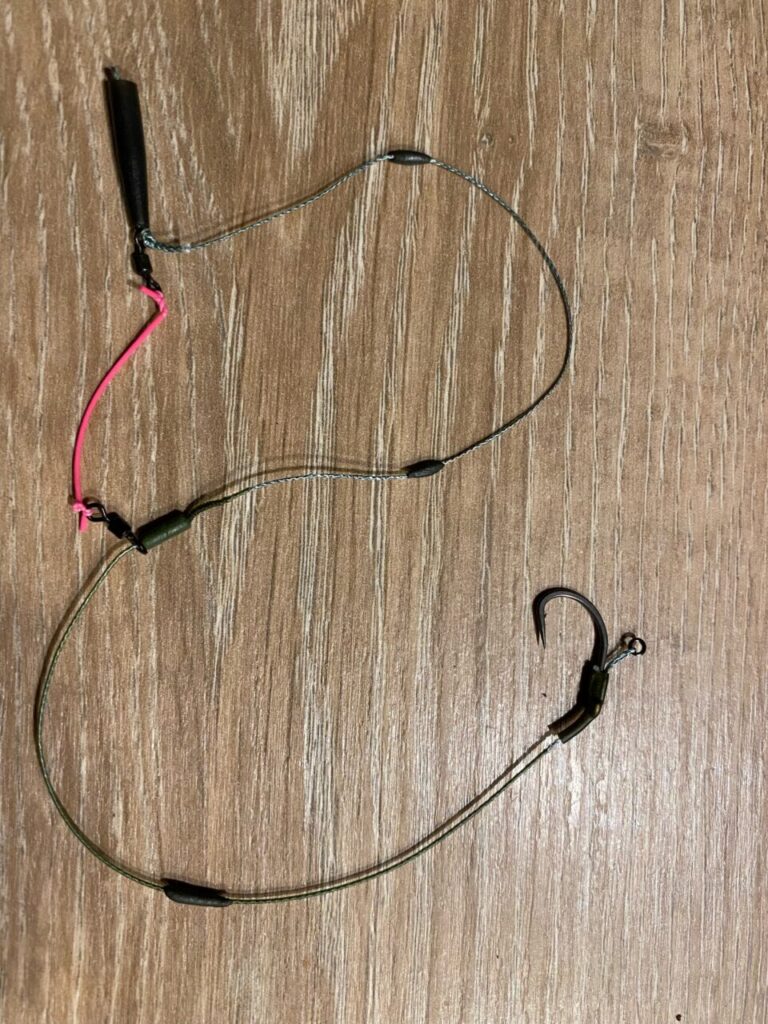
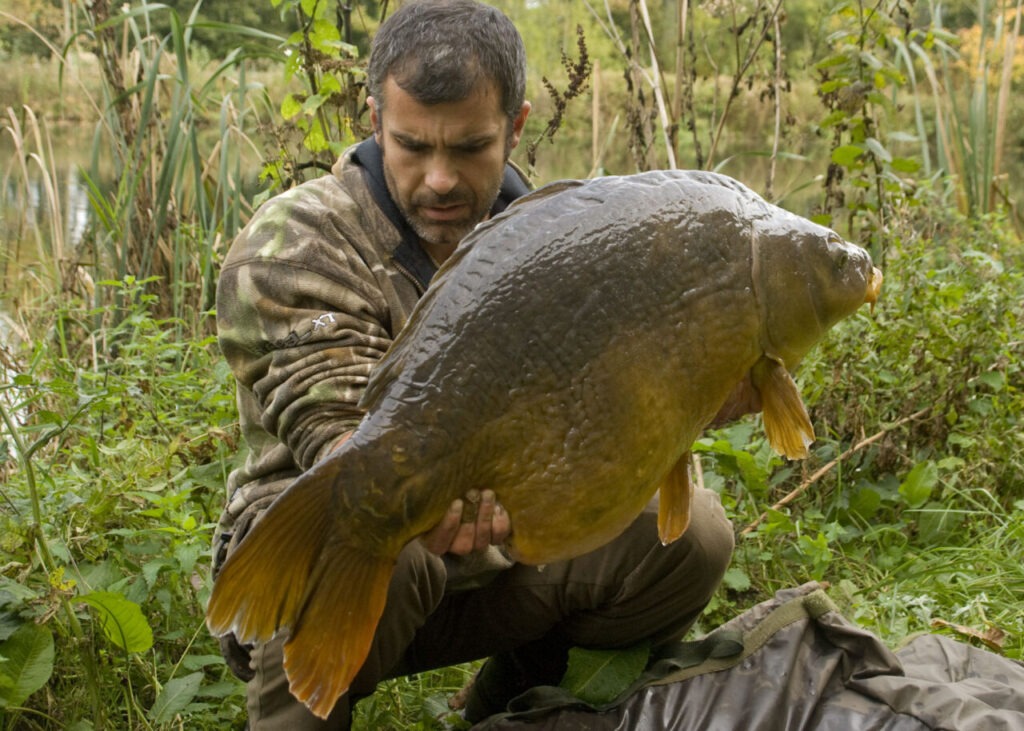
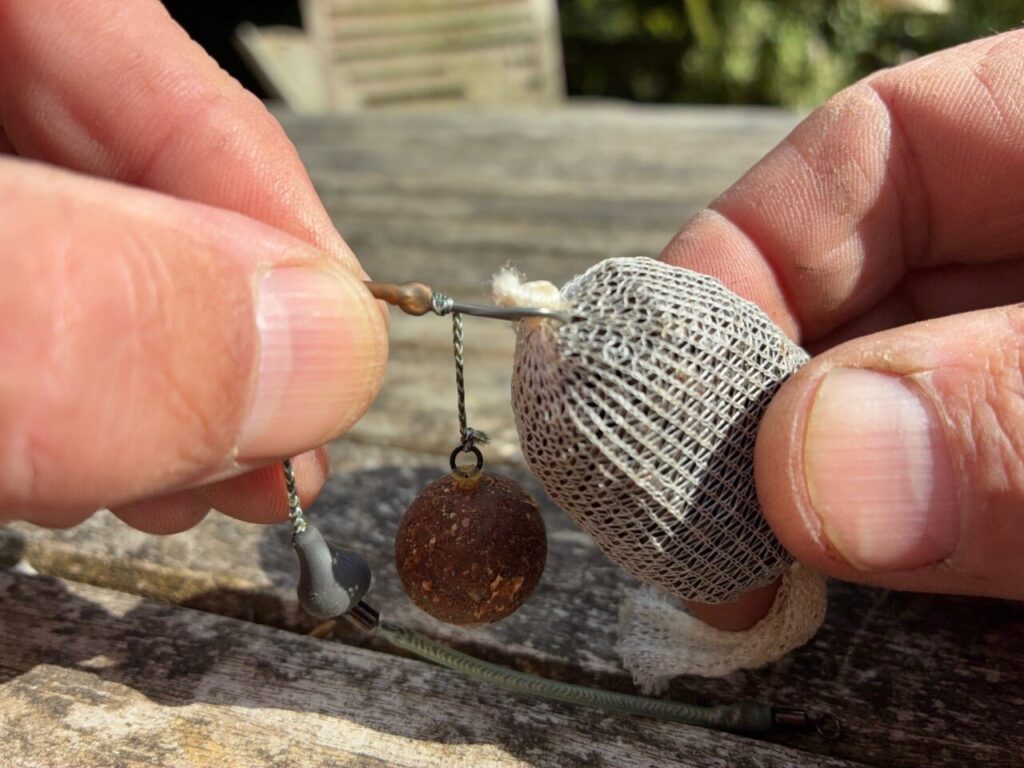
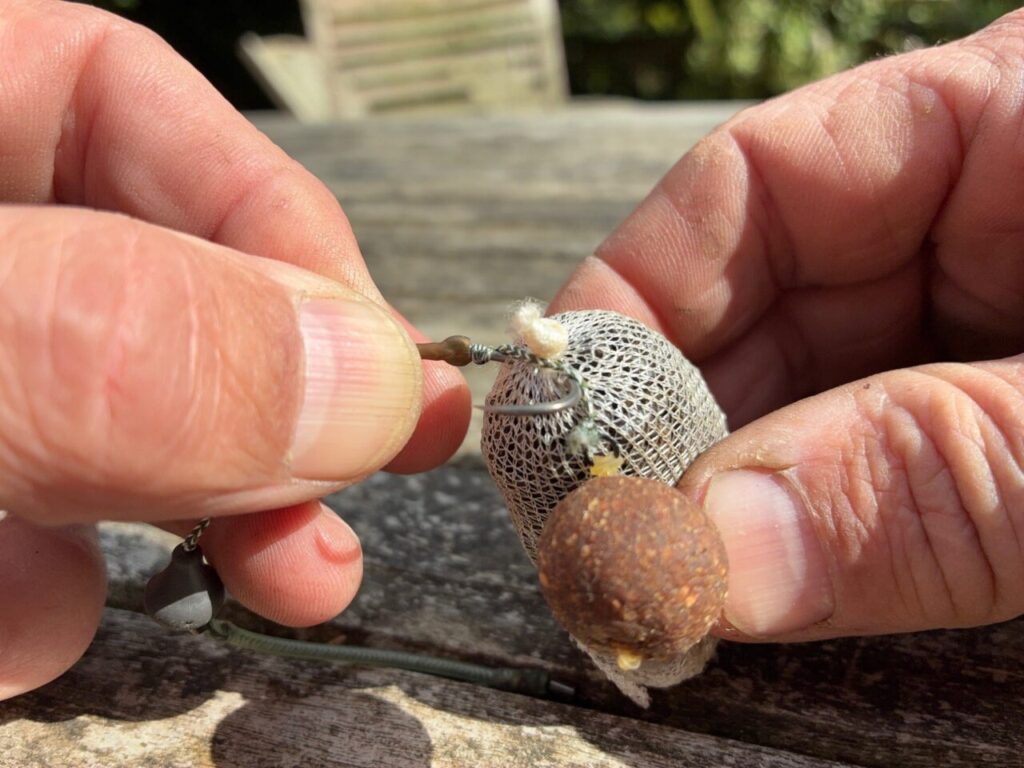
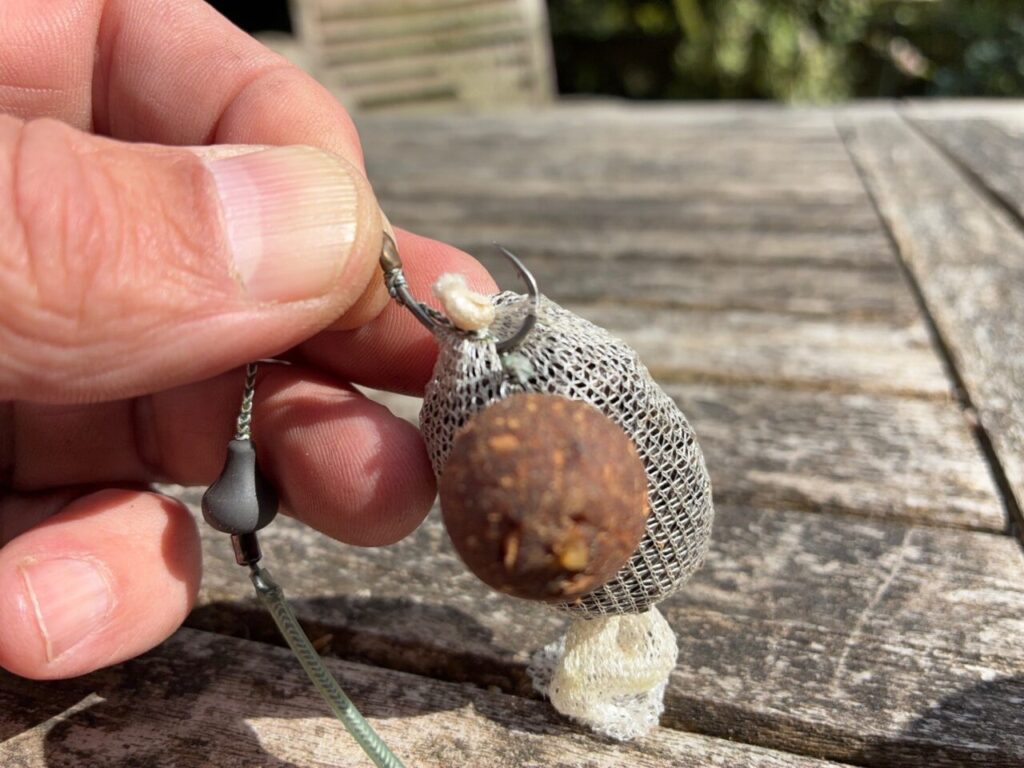
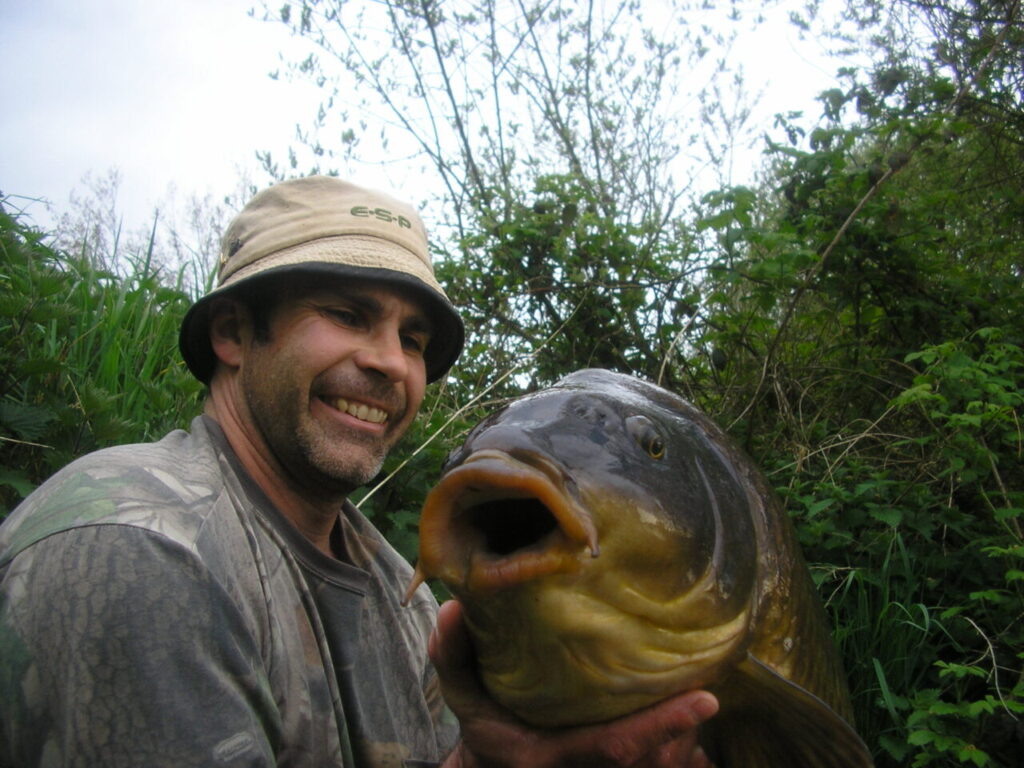
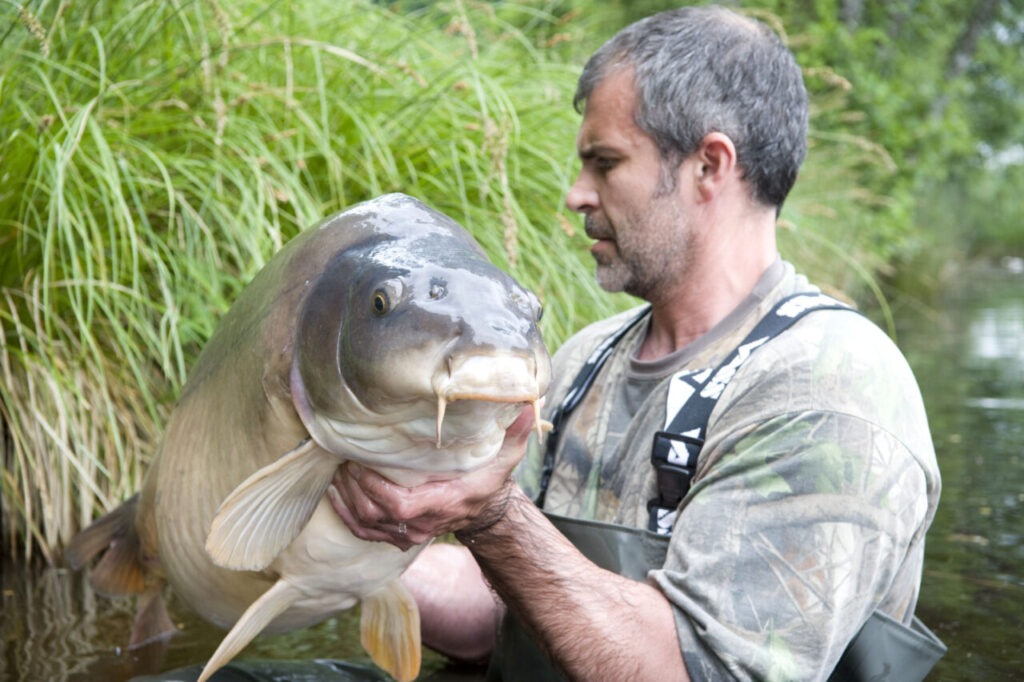
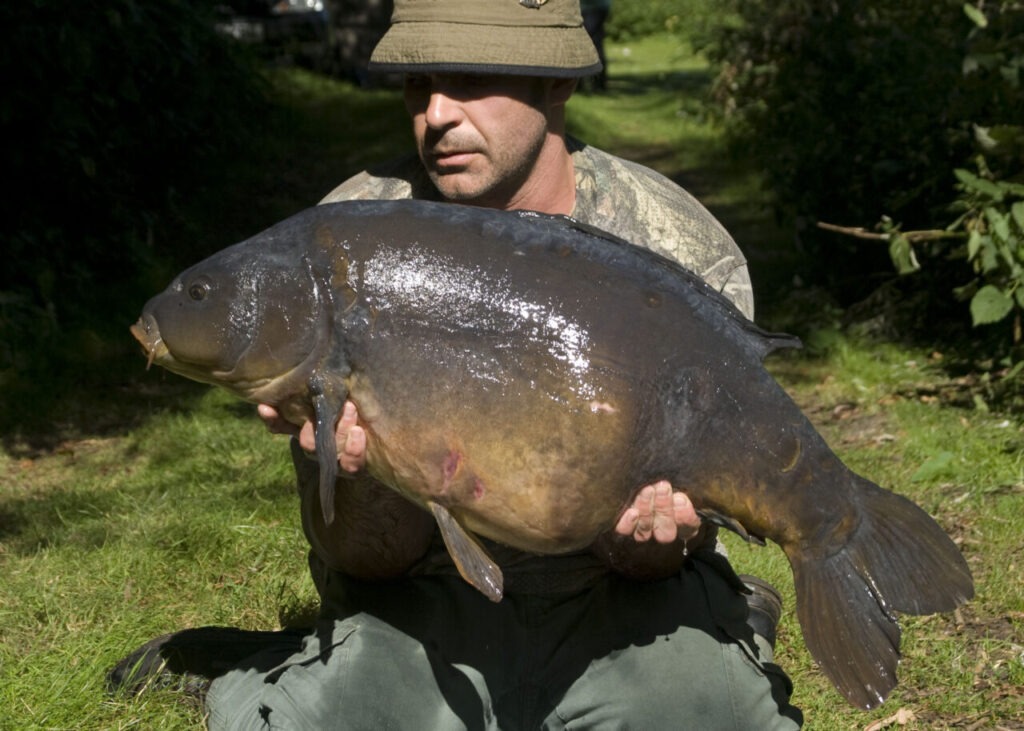












No comments, start a conversation and make a comment?